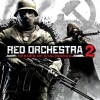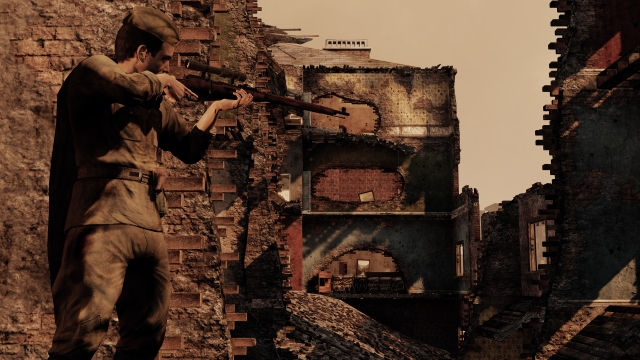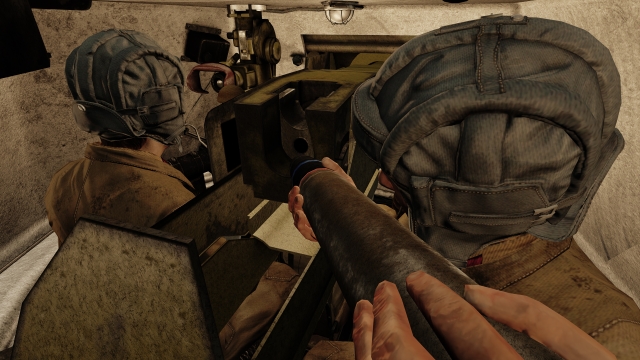Red Orchestra 2: Heroes of Stalingrad Review
 Game: Red Orchestra 2: Heroes of Stalingrad
Game: Red Orchestra 2: Heroes of Stalingrad
Developer: Tripwire Interactive
Publisher: Tripwire Interactive
Available on: PC Only
It is not often that we see a World War II shooter these days, especially considering that the genre used to be littered with them. Up steps Red Orchestra 2: Heroes of Stalingrad, a World War II themed FPS which focuses on the Battle of Stalingrad. The sequel to Red Orchestra: Ostfront 41-45 is the third Red Orchestra game to be developed and published by Tripwire interactive. This PC exclusive is not your average run and gun war shooter though, the series is well known for its uber realistic approach and expansive, historically accurate maps. More of a simulator than a game, does Red Orchestra 2 offer enough to capture the PC audience?
STORY: In a game where multiplayer is the focus, story gets a little left behind. Story comes mainly in the form of brief cinematics which are used to connect the dots before and after each encounter. Interestingly enough you get to play as a Nazi soldier which is not something you get to do in most historic shooters. It is perhaps refreshing to see both sides of the story but interest wanes after the first couple of chapters.
Gunfire is probably the most rewarding sound, slap a pair of 7.1 headphones on and you will recoil at the blast of each shot fired. Red Orchestra 2’s gunfire is perhaps the closest thing to a gun range I have found so far. Voice work is also pretty good, the German and Russian voiceovers which accompany the single player campaign seems authentic enough, whilst the shouts of comrades barking out their status and the screams of anguish on the field of battle send a chill down your spine.
GRAPHICS: Visuals are good without reaching the heights of spectacular. A modified version of the Unreal 3 engine has been used and with it, Direct X 9. No fancy tessellation on show here, textures are flat with any standout features such as bricks scattered on the floor and building detail actually modelled.
As you would expect, guns stand out with some good authentic model and texture work applied, unfortunately the same cannot be said for the plastic character models. It can be hard to differentiate between characters, they all seem to have the same base model and animation set which is probably best described as simple. If you are looking for a ‘pick me up’ at the end of the long day then you may have to look elsewhere, the colour scheme is grey, dull, and drab – perhaps something you cannot blame the developers for, after all they are re-creating the events of Stalingrad which on the face of it, looks cold and dark.
SOUND: Tripwire have done a great job in the sound department, capturing the atmosphere of a WWII battlefield and making the player feel like they are right in the middle of it. Maps are big with sound seemingly pinging all around the large outdoors, and sometimes small interiors. Shots can be heard from a distance to give a real sense that you are just a small part of a bigger battle.
GAMEPLAY: Realistic, hard, slow paced; all words that can be used to describe Red Orchestra 2. Tripwire Interactive have created a World War II simulator that oozes authenticity, everything from the guns to the battlefield is historically correct and designed to make you feel like you are taking part in the battle of Stalingrad.
Much like other games, Red Orchestra 2 has two main game modes, single player and multiplayer, unlike other games though and very much like the recently released Brink, Red Orchestra employs “mingleplayer”, the phenomenon where single player plays out like multiplayer match but with a complete roster of AI team mates and opponents. The single player campaign is split into two parts, the first of which sees players fight for the German Axis. The Axis campaign is eight chapters long and contains a good number of locations, mission types and tutorials throughout. The Russian allies campaign is also eight chapters long and is an inverse of the Axis chapters, minus the tutorials. The same battles take place on the same battlefields except with objectives reversed, if you were attacking as the Axis then you are now defending as the Allies.
Disappointing perhaps, as a good single player campaign has been a staple of many good FPS games down the years but Red Orchestra 2 is not about the single player, the backbone of the game is clearly with the multiplayer. Many players will skip the single player, heading straight to the online field of battle. Those that are new to the franchise will do well to work their way through the Axis campaign and take advantage of tutorials which aim to explain and teach the complex game mechanics.
Match-ups are all about attack or defence and some times a mixture of both. Matches tend to be slow paced with riflemen taking cover and firing from range. Red Orchestra has a pretty nifty first person cover system which allows player to get up close with the environment and peer over to take a shot. With large sweeping maps it would be very easy for battles to boil down to a sniper-fest, but thankfully there is a varying limit on class type depending on which map the current battle is taking place on. Larger maps that allow 64 players tend to have three sniper spots per team, leaving the remaining 29 players to take up the mantle of assault, rifleman, or if available – tank commander/crewman.
Taking down an enemy soldier can be exhilarating, but first you need to take cover, wait for the right moment, dial in the sight, take aim whilst remembering to compensate for bullet drop and squeeze that trigger and hope to see the splatter of red blood which confirms sweet success. Taking an opponent down feels great because you have to put so much work into it. Other times you may think that you have your man but at the last second someone ruins your day; suppression fire, nearby explosions, and even seeing a teammate go down will trip what can only be described as the “anxiety meter” causing colour to drain from the screen and make aiming even harder than it already is.
Sometimes as a foot soldier you can feel quite helpless. You run, take cover, shoot, and you feel like a real pro right up to the point where you are once again getting ready to fire when a mortar strikes right exactly where you just took cover. Battle commanders come armed with binoculars and can call in air strikes to ruin your day, thankfully there is only one commander per team and air strikes are not a constant.
LONGEVITY: The single player portion of the game is rather short lived, clocking in at around 5 hours for both campaigns combined, but the single player isn’t really the reason people would buy Red Orchestra 2. The multiplayer offers up endless hours of online combat which is only made better when teaming up with a clan. There are not a huge amount of maps available at launch but they are varied enough to offer a completely different experience from one another.
VERDICT: Red Orchestra 2: Heroes of Stalingrad can be described as harsh but fair…actually scrap that, it can be better described as very harsh and somewhat fair. If Red Orchestra was a drink it would be whiskey, a little hard to swallow at first but an acquired taste in the long run. If you are a fan of realistic WWII shooters then Red Orchestra 2 was made for you.
Not for the feint of heart, Red Orchestra 2: Heroes of Stalingrad portrays war in a way that other games have only dreamt of.







